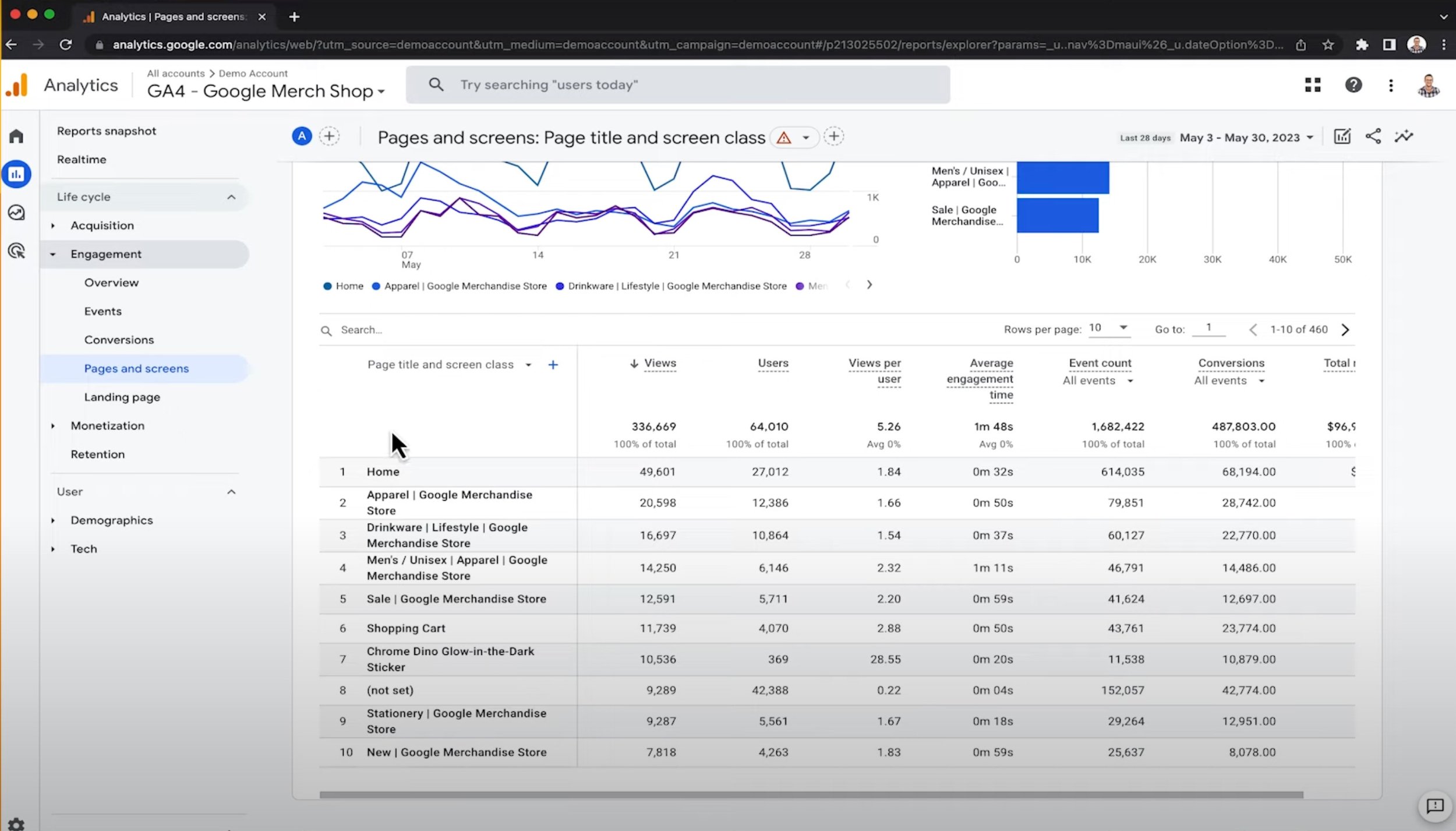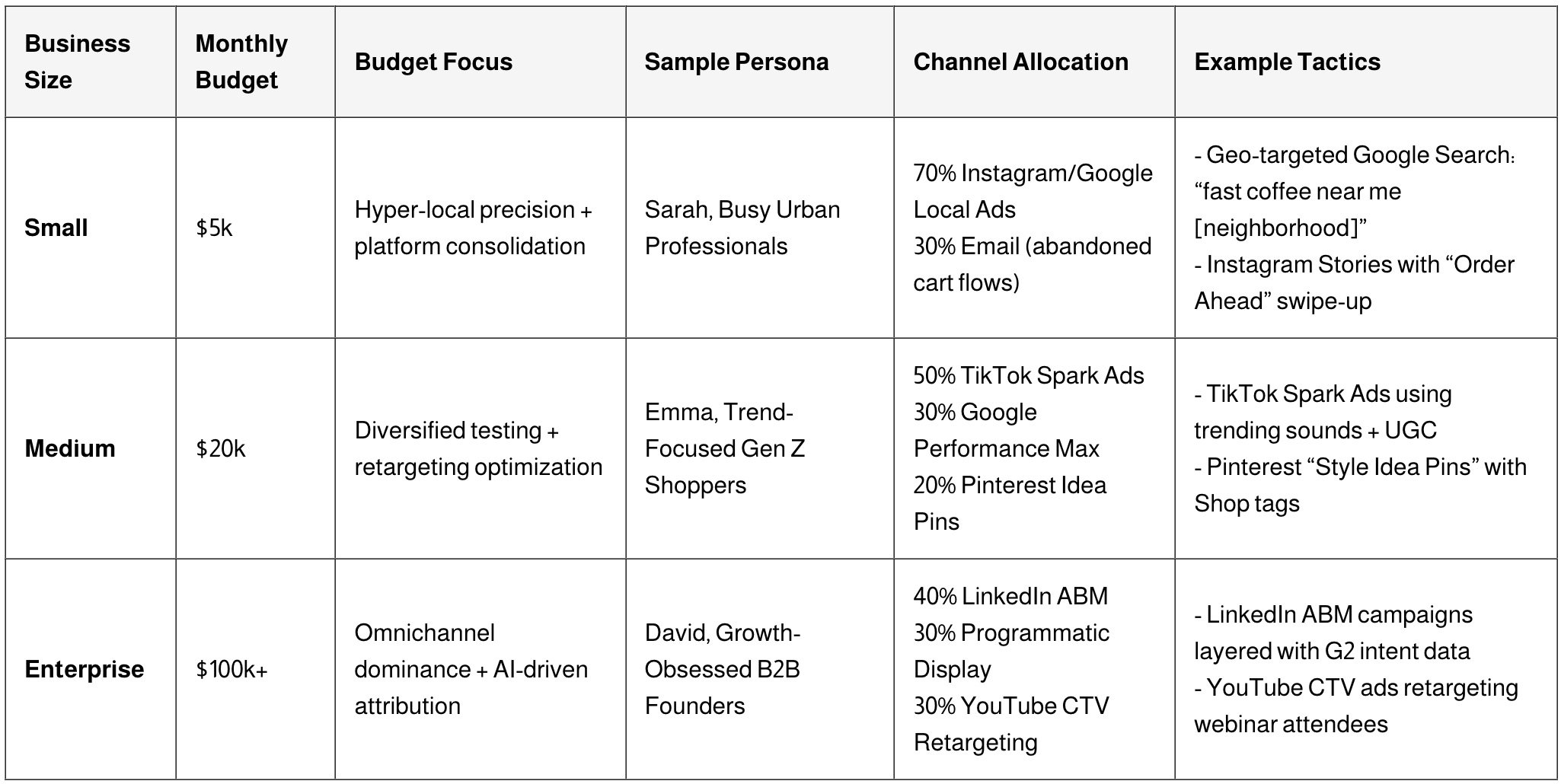How to Define Your Target Audience for Cost-Effective Media Planning
Let’s be honest—no one likes wasting money. But here’s the reality: 35% of digital ad spend in North America is potentially wasted on misaligned audiences (Nielsen, 2024). That’s a lot of money going down the drain. And in this economy, you need to make every dollar count.
So what’s the fix? Start with your audience—not your ad spend.
When you take the time to really understand who your customers are, where they spend their time, and what makes them buy, you’re no longer guessing—you’re investing.
In this guide, you’ll learn how (or be reminded) to:
Find hidden audience patterns in your data,
Build personas that mirror real buyers,
Map them to platforms where they actually engage.
At the end, you’ll get a downloadable checklist so you can apply these strategies right away. Ready to turn your audience insights into higher ROI? Let’s go.
Step 1: Mine Data to Find Hidden Audience Patterns
Most businesses think they know their audience. But do they really? The truth is, assumptions can be expensive. Your best customers might not be who you expect—and if you’re not looking at the right data, you’ll miss them entirely.
Here’s where I recommend you start:
Analyze Website & Ad Data – Your website and ad analytics are treasure troves of customer insights. Google Analytics, Meta Insights, and CRM data can reveal demographic trends, geographic patterns, and the pages or ads that drive the most engagement. Look beyond vanity metrics (like traffic and clicks) and focus on conversion paths. Where do your paying customers come from? What’s their journey before they buy?
Detailed Reports via Google Analytics
Survey Your Customers – Want the best way to know what drives your audience? Ask them. Use tools like Typeform, Google Forms, or Hotjar to gather insights on what made them buy, what problem they were solving, and where they heard about you. Sometimes, a simple question like “What nearly stopped you from purchasing?” can unlock powerful insights that help refine your messaging.
Examine Social Media Insights – Your social platforms hold key information on who engages with your brand. Meta Business Suite, LinkedIn Analytics, and TikTok Audience Insights can tell you age, gender, interests, and behaviors of your most engaged followers. Compare this data against your actual buyers—are they the same, or is there a disconnect?
Performing this step alone can make an immediate impact on your media performance - let’s explore a hypothetical scenario that illustrates this:
A local restaurant was spending $5,000/month on Facebook ads but wasn’t seeing enough foot traffic. By digging into their Google My Business location data and point-of-sale analytics, they discovered that 70% of repeat customers lived within a 5-mile radius. Even more interesting? Their most profitable orders were coming from lunch-hour takeout orders, not dinner guests. Armed with these insights, they shifted 50% of their budget to geo-targeted Google Ads and lunchtime-only Facebook promotions. The result? 35% lower CPA and a packed restaurant every weekday.
Taking a truly data-driven approach to your audience strategy does not mean only leveraging one dimension of information. Analyze as many data points as possible (without disorienting yourself) to make the most informed decisions possible.
Step 2: Build Personas That Mirror Real Buyers
Once you’ve uncovered who your actual customers are, it’s time to take things a step further. Instead of just looking at demographics and behaviors, you need to craft detailed buyer personas—profiles that capture not just who your audience is, but what drives them to buy.
How to Turn Audience Data into a Persona
Identify Common Trends: Look for patterns in age, location, purchasing behavior, and engagement. Are there clusters of similar customers?
Group Similar Customers: Segment audiences based on key traits like industry, purchase motivations, or buying frequency.
Refine with Behavioral Insights: Add qualitative data from customer surveys and feedback. What are their pain points? What influences their decisions?
Craft a Narrative: Combine all this data into a clear, relatable persona that reflects a real buyer.
Keep Personas Dynamic: Regularly update your persona(s) as market conditions and customer behaviors evolve. Use real-time data to ensure your persona(s) always reflect current trends.
With a developed persona, you should have a coherent user profile that can be translated to actionable approaches that will further enhance your campaign effectiveness. Let’s dive into a couple of examples to reinforce understanding.
B2C Persona: Sarah, The Busy Coffee Lover ☕
Age: 28–40 | Location: Urban
Pain Point: Needs high-quality coffee on the go but has limited time.
Preferred Platforms: Instagram & Google Search
Content Style: Prefers influencer testimonials and quick-order apps.
Application: A Brooklyn-based coffee shop noticed their Google Ads for “best coffee shop” had a high CPC ($4.50) and low conversion rates (2%). By digging into their data:
Google Analytics: 65% of website visitors used mobile devices and searched terms like “coffee near me open now” between 7–9 AM.
Instagram Insights: Posts showing baristas handing orders through a pickup window had 3x more saves/shares than generic latte art photos.
Customer Surveys: 80% of Sarahs cited “speed” as their #1 priority over “quality” or “price.”
So they pivoted . . .
Google Ads:
Switched to long-tail keywords: “mobile order coffee Williamsburg” + “fast pickup coffee near me.”
Added Google Local Inventory Ads with real-time pickup estimates.
Instagram:
Partnered with micro-influencers (@NYCFoodieMom) to post Reels of them grabbing coffee in under 3 minutes.
Ran “Skip the Line” Stories ads with a tap-to-order CTA linking to their app.
In-Store:
Added QR codes on napkin dispensers: “Scan to order ahead next time!”
B2B Persona: David, The Growth-Focused SaaS Founder 💻
Age: 35–50 | Location: Global (mostly urban tech hubs)
Pain Point: Struggling to scale his SaaS startup efficiently while balancing costs.
Preferred Platforms: LinkedIn & Google Search
Content Style: Prefers data-backed case studies, ROI-driven content, and thought leadership articles.
Application: A B2B SaaS company initially targeted Fortune 500 execs with LinkedIn ads focused on “enterprise-grade security.” But after analyzing:
LinkedIn Ad Insights: 80% of engaged users had titles like “Founder” or “Head of Growth.”
Google Analytics: 72% of free-trial users came from companies with 10–50 employees (via “Audience > Technology” reports).
So they pivoted . . .
Ad Targeting: Shifted LinkedIn ads to SMB founders using job titles (e.g., “CEO,” “Growth Lead”) and company size filters (1–200 employees).
Messaging: Highlighted “30-Day ROI Guarantee” and “No-Code Integration” instead of enterprise features.
Content: Launched a LinkedIn Carousel series (“5 AI Hacks for SMBs Scaling on a Budget”) with founder testimonials and free ROI calculators.
I could make up some numbers to convey impact, but I think the expected outcomes would be clear. Leveraging personas to help inform the marketing and campaign optimizations that each hypothetical business made would easily translate to improved performance efficiency and greater ROI.
Step 3: Map Personas to High-ROI Channels
Your personas aren’t just profiles—they’re blueprints for budget efficiency. By aligning their habits, pain points, and content preferences with the platforms they trust, you turn audience insights into measurable cost savings.
Strategic Channel Selection
B2B Decision-Makers: Prioritize LinkedIn’s Thought Leader Ads and industry forums where credibility is built. Example: Use LinkedIn’s new 2024 “Account Intent” AI tool to layer job titles with content engagement signals.
Gen Z Shoppers: Lean into TikTok Spark Ads (boosted organic posts) and Instagram Reels with shoppable tags. Why? Social media has overtaken Search and TV for brand discovery among Gen Z, with 42% using social networks for shopping-related research (GWI, 2024)
High-Intent Local Buyers: Dominate Google Local Search Ads and Google Maps promotions with real-time inventory updates. Tip: Sync “near me” keywords with mobile-first landing pages.
Time-Strapped Professionals (e.g., Sarah): Use Google’s Performance Max campaigns with audience signals like “in-market: quick-service restaurants” + mobile bid adjustments.
Budget Allocation by Business Size
Business Scenario: A mid-sized fashion brand reallocated 30% of their Facebook budget to TikTok after analytics revealed their core persona (Emma) spent 2+ hours/day there. Using TikTok’s 2024 “Engaged View” bidding, they prioritized users who watched 75%+ of competitor try-on hauls. CTR doubled and CPC dropped by more than 50%, freeing up $3k/month for high-performing UGC and additional Pinterest testing.
💡 Test Small Before Scaling: Run niche platform tests ($100–$500) using persona-driven criteria:
Example: Allocate $300 to TikTok ads targeting users who follow “quick coffee hacks” hashtags (for Sarah-like audiences).
Measure engagement depth (e.g., video watch time, saves) over vanity metrics.
Key Takeaway: Your personas aren’t just who you target—they’re how you allocate. Miss their habits, and you’ll miss your ROI.
Reinforce ROI Confidence with the Right Audiences
Remember, audience targeting is an ongoing process. Regularly review your data, adjust your strategies, and stay informed about emerging platforms and technologies to ensure your media planning remains cost-effective and impactful.
Download the Audience Segmentation & Persona Worksheet to apply these insights.
And when you're ready to refine your strategy even further, book an audience audit with me. 🚀



